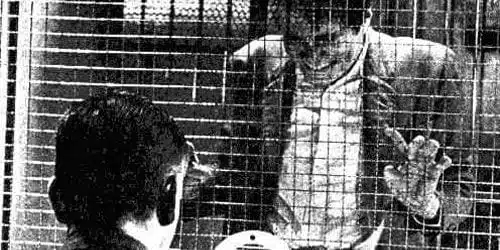
Akira Kurosawa was nothing if not an unrelenting perfectionist, and there are many stories describing the lengths to which he would go in order to realize his own vision and ambition. The true hallmark of his 50-year career, then, is not the wide-frame staging, painterly poetics, or emotional reckoning of his characters, but simply how remarkably together his films are.
High and Low (Tengoku to jigoku, literally “Heaven and Hell”), from 1963, is no different — though on the surface, it’s essentially a genre exercise based on a pulp crime novel by Ed McBain, a conventional post-noir concept that any director could have easily spun into pulp cinema. Kurosawa, however, took that story (the son of a wealthy businessman’s chauffeur, mistaken for the businessman’s own son, is kidnapped and held for ransom) and turned it into something more than its surface dictated: an allegory for the charged dualism of modern-day Japan.
Kurosawa’s exploration of dualism is manifested throughout High and Low‘s visuals and subtext, from the juxtaposition of Yokohama’s affluent air-conditioned hills and seedy junkie-inhabited back alleys, to the story’s moral dilemmas of right and wrong. (For this reason, and because of its stark and shadowy visual aesthetic, I find it pairs well with Carol Reed’s The Third Man and Orson Welles’ Touch of Evil.)
The film itself is split into two halves: the first hour takes place entirely in the living room of Kingo Gondo’s house in the hills, while negotiations with the kidnapper take place over the phone; after a short middle section on a high-speed train that serves as a narrative bridge, the second half of the film follows the police as they tirelessly track down the kidnapper. Intricately composed wide shots dominate the scenes in Gondo’s house, while the bustling inner-city is rendered in increasingly expressionist tones. Formally, these dualities are incredibly pleasing and allow the film to be symmetrically airtight (one ingenious sequence cuts between two cars, one framed through the front window and the other framed through the back), and symbolically, they build a rather audacious whole of polar opposite-generated friction.
This isn’t to say that High and Low can’t be enjoyed strictly as a bang-up suspense film, for it’s arguably one of the greatest genre films ever made (even if Kurosawa never made a genre picture like it before or after). Taking some stylistic cues from Alfred Hitchcock’s Rope (1948) in its first half, including a prolonged sense of anxiety and a fondness for long takes, High and Low‘s second half is a seminal prototype of the contemporary police procedural film, constructed like a jigsaw puzzle and expertly paced. (At almost two and a half hours, the film never feels like it’s dragging.)
The film is staged as a series of escalating tensions that converge, divide, subside, and explode: the agony of a missing child, the kidnapper’s terse phone calls, the masterful sequence aboard the speeding train, the complex paths of detection and deduction that set the cops on the kidnapper’s trail. Toshiro Mifune, the DeNiro to Kurosawa’s Scorsese, gives a terrifically bottled-up performance as Gondo, a high-powered, wealthy executive for National Shoes who faces certain financial ruin when he puts up 30 million yen as ransom for his chauffeur’s son, Shinichi. It’s Mifune’s penultimate performance in a Kurosawa film, and his stockier, mustachioed appearance suggests a steely façade that Gondo has spent years perfecting — a façade that threatens to shatter into a million furious pieces at each twist in the plot.
As such, there’s a tendency — perhaps more often in the past than now — to unfairly dismiss High and Low as a diversion in Kurosawa’s otherwise “epic” trajectory of samurai-themed existential cinema. In fact, it’s one of his greatest films (it’s the last truly great film from his “classic” period spanning the 1940s through the 1960s, and the second-to-last that he’d make in the ’60s), a tour de force of formalism and metaphor that plays like a high entertainment think-piece.
Criterion’s new two-disc edition of High and Low, an update on its original 2002 release, amplifies the film’s significance with an overload of critical opinion and behind-the-scenes info. In addition to two great booklet essays by critic Geoffrey O’Brien and scholar Donald Richie, a feature-length commentary by Kurosawa scholar Stephen Prince proves infinitely insightful (if a wee academic in tone).
The second disc includes a documentary on the making of High and Low, which takes a detailed look at the film’s production design and Kurosawa’s meticulous nature, as well as individual interviews with Mifune and Tsutomu Yamazaki. Here we learn how much Kurosawa fidgeted with the fake Yokohama cityscape shimmering beyond Gondo’s windows until it was just right — so detail-obsessed, yet so attuned to the big picture.

